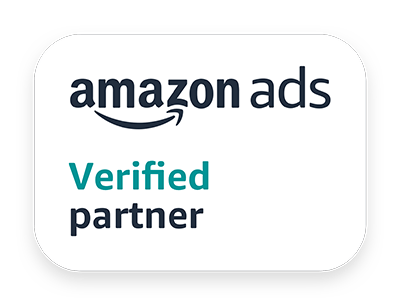Understanding “Good” Conversion Rates on Amazon: Overview
Have you lately been finding yourself replaying this question over and over again in your head:
“What is a GOOD conversion rate on Amazon?”
This question might be like that proverbial piece of string but because we’ve worked with over 200 seller accounts, we can provide you with some really (really) good metrics for you to benchmark the “ideal” conversion rate. These will be based on averages from a variety of different clients we’ve worked with over the years. We break down the data by category – furniture apparel, for example – where the conversions are tight, so around 1-3%.
Other categories, however, such as FMCG, consumables, food, etc. have a conversion rate of close to 30%. So there’s a wide variance depending on your category.
Well, what’s the best way to monitor your conversion rate data?
Amazon offers two points to check this data:
- Go into ‘Reports’, then ‘Business Reports’, then select ‘Unit Session Percentage’. This data is only about your sales in Seller Central. Subsequent sentence didn’t make complete sense, sorry Chris!
- Under ‘Brand Analytics’, look for ‘Search Performance Catalogue’. You need to be enrolled in Brand Registry for this. This brings up all of the sellers for your brand. Brand Analytics also gives you greater drilldown and insight into the metrics that look at basket ads and clickthrough rate by brand.
So, here’s our breakdown of Amazon conversion rates as a marketing agency for the platform:
- Our ads conversion rates are about 10.3% on average and this is alongside an 18.3% ACOS and a 5.3% TACOS, based on 1.5 million sales
- Our organic products conversion rates on our brands is about 15%
- Our brands have conversion rates as high as 34%
There’s a really good variance in terms of conversion rates as you can tell from the above.
Now, if you can look at your product category by identifying the amount of conversions, then that can be really helpful in you being able to understand your conversion rate and your brand share.
What is considered a good conversion rate on Amazon?
Now you understand how to find out your conversion rate but how do you truly know if its “good” or “bad” according to Amazon?
Let’s start with Amazon themselves. Amazon boasts some of the best conversion rates across all eCommerce marketplaces in existence today, so it’s unsurprising to see brands go to Amazon first rather than other marketplaces like eBay, for instance.
On average, the conversion rate for a non-Prime shopper on Amazon is anywhere between 10 and 15%. This number plummets to around 3.2% when we look at the top 500 merchants on Amazon, simply due to how often these merchants are viewed.
Amazon Prime customers have a ridiculous conversion rate by comparison: a whopping 74%. Now, let’s stop to think for a moment: the higher the percentage, the better, right?
Wrong.
A “good” conversion rate on Amazon will vary per product across each niche. So, items that are relatively more expensive – say, over £80-90 – will naturally have lower conversion rates because people are more likely to shop around for a while and compare those expensive products with other products to see how many pounds they can save, if at all.
Moreover, a good Amazon conversion rate will also depend on sample size. For example, you may have 10 conversions out of 20 page views – despite the fact that your conversion rate, in this case, is 50%, you’ve still made just 10 sales. That’s not really great in terms of revenue.
Let’s flip the coin – you may have 100 page views with just 20 conversions. Here, your conversion rate of 20% might seem abysmal, but your sales are actually double, compared to the previous example.
Even though a “good” conversion rate may be subjective, we will attempt to put some context into what we believe is a good conversion rate for selling on Amazon.
Let’s first take a typical standalone ecommerce site like Shopify. Here, the conversion rate is between 1% and 3%, on average. So, out of every hundred customers, just one to three covert into a sale.
Amazon, however, is trusted and frequented the world over so people are definitely more likely to convert here, since they are there not to merely browse around but also to buy. With that out of the way, based on our own experience selling and helping other sellers sell more, the average conversion rate is around 10% – that’s much higher than any other eCommerce store.
This conversion rate depends on multiple factors, such as shipping speed, listing quality, reviews, price, etc. And, again, just to echo what we said earlier: a cheaper ‘impulse’ type of product will see more purchases and, therefore, a higher conversion rate, compared to other more expensive, “planned” purchases.
How can I improve my conversion rate on Amazon?
Now that we know some basics around optimal conversion rates, let’s move on to the good stuff: how you can personally boost your conversion rates.
Optimise product listings
Naturally, the first thing a potential buyer sees when scrolling through your list of products is the main page, page title, price, bullet points, etc. It is crucial that you get this right from the outset.
So, apart from great product images, which we’ve described below in a bit more detail, your listing should also contain compelling titles, A+ content, positive reviews, product videos, informative bullet points, and optimal keywords.
One listing containing a poor-quality photo, no informative product description, no bullet points, etc. is all it takes to bring your conversion rates crashing down. Would you buy from such a listing? Likely not.
Think about every element that you can improve in your listing, along with the correct level of optimisation so that it quickly answers questions and addresses pain points, as well as improves the buyer’s overall experience. Boom, converted!
Optimise your images
“First impressions really matter” truly matters on a platform like Amazon. After all, the way you present your product or brand is what will get you a good conversion rate.
Time to review your Amazon storefront. Do all your listings contain high resolution images that showcase your products in the best light possible? Do they give people a fairly good idea of what it must be like to hold the product up close or use it day to day? Is the sizing optimal? Amazon recommends that you have a square image for products sized at 1,000 pixels.
Your image stacks are super-important too, especially as more and more shoppers are now shopping through a mobile device. The first thing a mobile device user will see is your image stack – if they scroll even slightly, they will see the buybox. What if there’s no A+ content or listing description?
Images on Amazon need to sell the product, not just show it. As such, they need to call out your product’s best features, show it in action, integrate the positive feedback you’ve gotten into graphics, answer frequently asked questions, and so on. Now, the image stacks showing first on mobile will not mean that you can bypass the description. While desktop users see the description straight away, mobile users will also see it once they scroll down for more information.
Start prioritising reviews
Amazon’s algorithm is mostly qualitative and not quantitative. If you’re not prioritising customer reviews, then you must at the very least set an objective to acquire minimum one review per week from a verified buyer. Email your customers asking for reviews, if you have to, but understand that getting regular reviews is important for conversions.
Even a small handful of reviews, especially if they are positive, will help potential buyers make quick decisions around your product. If you need tips on how to increase your reviews and get genuine ones only, my team and I are only a phone call away.
Aside from reviews, you can also use social proof, such as specific Amazon badges, to increase conversions. These would namely be Best Seller, Amazon’s Choice, Climate Pledge Friendly, and others. These banners can increase the level of trust around your offerings.
Optimal pricing
Understanding the subject of pricing is very, very important to maximise conversions and this is why you require a proper pricing strategy relative to the profitability and quality of your product, as well as its competitive offers.
Pricing is definitely not one of those “set it, forget it” metrics, you have to be constantly testing out different pricing strategies to see what is best for your specific brand and product category.
Again, my team can help you set just the right pricing strategy, keeping in view all influencing factors.
Improve the customer experience
When people have a memorable brand experience while shopping on Amazon, they are likely to buy from that brand over and over again.
Think about the ways in which you can improve your customers’ experience: shipping & packaging, email campaigns, improved customer service and so on. All of these will ultimately lead to higher conversion rates.
The topic of improving conversion rates on Amazon is a deep, deep one. We’re very easy to reach and would love to give you the complete lowdown: (+44) 01743 816191.



